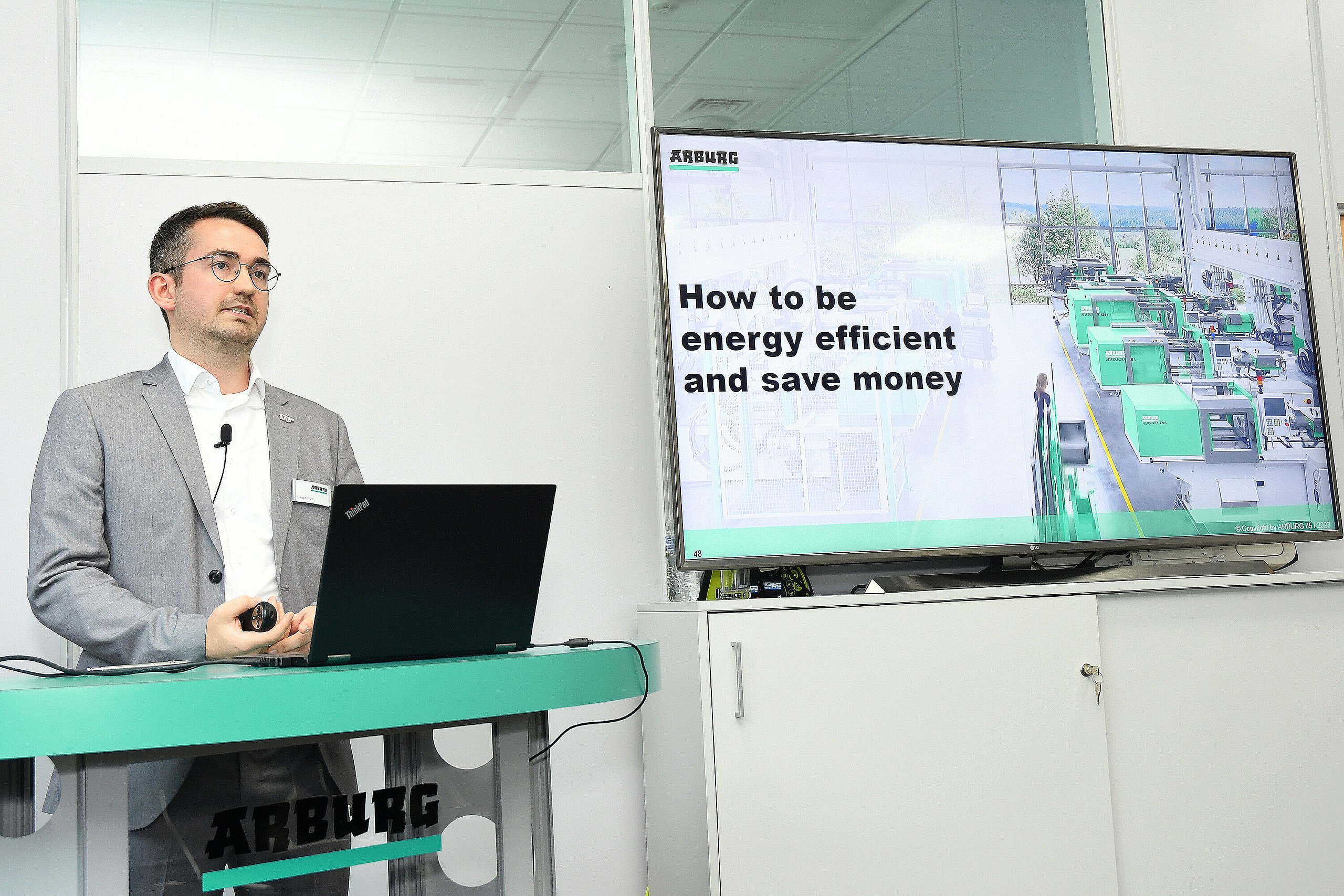How to be energy efficient and save money
Moulders that want to reduce their energy bills must look at the entire process chain – from product design and machine technology to process control and production planning – to save money. ARBURG applications expert Lukas Krueger showed more than 100 attendees at ARBURG Ltd.’s open house in May, celebrating 100 years of the Hehl company, that adjustments covering eight steps of the entire moulding process can achieve savings of £ thousands per year, depending on the installed machine base and the measures taken.
All these key stages can produce energy savings for the moulder:
- Product design
- Mould technology
- Machine technology
- Peripheral technology
- Configuration
- Process integration
- Process control, and
- Production planning
Firstly, choose the right material, maintain tolerances suitable for plastics, and look to reduce wall thickness and material quantity. Then, energy can be saved by insulating the mould and clamping platens, tubes and even hot runners, if these are used. You can adjust the tube sizes and measure the energy consumption to find the most efficient tube size. Next, cooling in the mould can be modified to use water more effectively. An efficient design and close contours can reduce cooling time, cutting energy in the water pump.
Machine technology is the biggest single factor to reduce energy. Hybrid and all-electric machines are the most energy efficient, closely followed by energy-optimised hydraulic machines. Regular hydraulics, while robust and capable machines, can use twice the electricity of a modern electric machine. Insulate the cylinder heating zones, using full cylinder insulation if possible. When designing cylinder insulation, consider the optimum temperature regulation for your moulding process. ARBURG has run energy usage tests of fully insulated versus non-insulated cylinders and moulds, for different size machines. Energy savings depend on the electricity rate and machine size, varying from £240 to up to £2,280 for an ARBURG 820 S 4000 at 40p / kWh.
Using peripherals, the design and choice of temperature control units can also affect total energy usage. The configuration of the machine for different purposes and volumes will consume energy very differently. It depends on the machine technology; hydraulic, servo-hydraulic or electric.
High volume packaging typically requires a lot of energy due to the constant closing/injecting/opening, whereas low volume parts usually need more cooling time during which, with a servo-hydraulic machine, almost no energy is consumed (the pump idles during holding pressure). So, for packaging, an electric versus servo-hydraulic machine will register much higher energy-saving, but this difference is smaller for low volume work.
The relative energy gain per cycle (or energy saving per part) is higher on slow cycling parts. The energy gain per individual part is lower on fast cycling parts, but many more parts are produced per hour/day so the absolute energy gain over time is higher.
For process integration, automating operations can also reduce some energy used. Automation increases the machine’s productivity by having consistent operations on de-moulding or other secondary activities. This leads to reduced cycle times and reduce the overall time required for the machine to be used, cutting energy albeit in small amounts.
